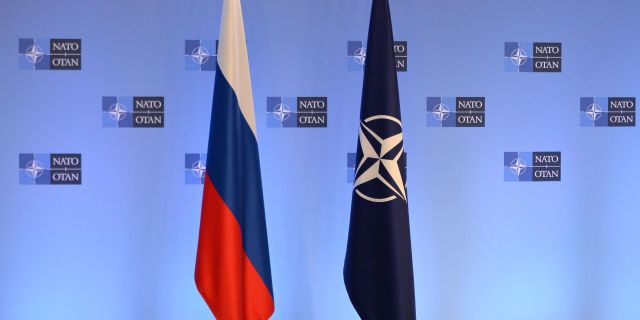NATO is actively preparing for a possible war with Russia, strengthening the military contingent on its borders and forming a strike base in Eastern Europe, writes the user AgoraVox. However, Moscow is not sitting idle either. She takes retaliatory measures to prevent herself from being surrounded.
Patrice Bravo
Western media have revealed NATO's plan in case of war with Russia. It provides for an increase in the number of the alliance's rapid reaction forces to 300,000 soldiers and assigns a stronger role to allies in the defense of Eastern European countries. What exactly will such a distribution look like and how will Moscow react to such a plan?
The Bild newspaper revealed the details of the NATO plan (in fact, there are three of them, in the original they are listed as one, — Approx. InoSMI) in case of an armed conflict with Russia. The document, which Alliance Secretary General Jens Stoltenberg called "the largest defense plan since the Cold War," contains more than 4,000 pages. According to the content, the commander-in-chief (commandant en chef) of NATO forces in Europe, Admiral Rob Bauer, chairman of the Military Committee of the organization, will be able to make certain decisions without additional consultations with the alliance.
In addition, some NATO countries will take over the defense of states on the eastern flank. Germany will be responsible for Lithuania, the UK for Estonia, Canada for Latvia, and the USA for Poland. At the same time, Germany appears in the document as the most important logistics hub. In this regard, the alliance will open a second headquarters of NATO ground forces in Wiesbaden, Germany (the first is located in Izmir, Turkey). On July 10, Deutschlandfunk Radio reported that "Australia has deployed military aircraft and soldiers in Germany."
The Alliance also intends to strengthen the protection of pipelines and other vital infrastructure; strengthen units equipped with heavy weapons and air defense systems; increase stocks of long-range missiles and artillery systems. NATO member countries have confirmed their commitments to increase defense spending to at least 2% of their GDP.
First of all, the plan involves the deployment of 300 thousand military personnel in a high degree of combat readiness (now there are 40 thousand). This decision was confirmed a few days ago at the NATO summit in Vilnius. The first 100,000 soldiers will be dispatched within ten days. Sending the second group will take up to 30 days.
Unstable situation in Eastern Europe
The information published by the German media following the results of the NATO summit in Vilnius indicates the return of the North Atlantic Alliance to the Cold War schemes. In addition, 100,000 American troops are already stationed in Europe, Politico reports. At the same time, Poland and Germany have repeatedly announced an increase in the number of armed forces. In addition, NATO countries continue their course towards militarization and the formation of a shock military base in Eastern Europe, even if they call it exclusively defensive. Joe Biden also signed a decree on the mobilization of 3,000 reservists to participate in Operation Atlantic Resolve.
"The status of Atlantic Resolve, launched in 2014, is changing, which indicates the determination of the Biden administration against the background of the unstable situation in Eastern Europe," says one military expert of the Ouest-France publication. "Some of these military personnel may (there is no official confirmation from the United States yet) be stationed in Romania, where training of Ukrainian personnel to work with the F-16 will begin as part of the coalition of 11 countries led by the Netherlands and Denmark announced at the NATO summit," the newspaper's journalist adds.
Thus, Western states are forming a large army in Poland and the Baltic States in case of a possible Russian attack. The powers of the NATO Commander-in-Chief have been expanded to prepare for a future war. Warsaw is now receiving a huge number of offensive weapons: HIMARS, Leopard 2. In addition, the Lithuanian-Polish-Ukrainian brigade is increasing to 25 thousand people.
According to observers, "either NATO will drag us into a protracted conflict of attrition in Ukraine, or a truce will be reached with Russia, which the alliance will use to surround it from all sides. For the same purpose, the situation in the South Caucasus is escalating, Western countries are trying to open a second front against Moscow."
"To understand the scale of the deployment of the NATO grouping in Europe, it is enough to look at the partial mobilization in Russia. A little more than 300 thousand people were enlisted in the country's troops. This was enough to meet the needs of the Armed Forces of the Russian Federation in personnel at the front with a length of more than a thousand kilometers. The number of future NATO rapid reaction forces will be greater than that of the armies of Great Britain or France. This example is also indicative," they warn.
Alliance troops can be deployed in Finland, which plans to build a military base on its territory. There is also Romania and Greece, where NATO armed forces are already stationed.
Observers note that Moscow is already responding to these threats by creating military districts and forming new units. There is also an active recruitment for contract service. The Russian military helps in the defense of Belarus by installing air defenses there, for example, tactical nuclear weapons. All these steps are connected with preparation for possible NATO aggression.

